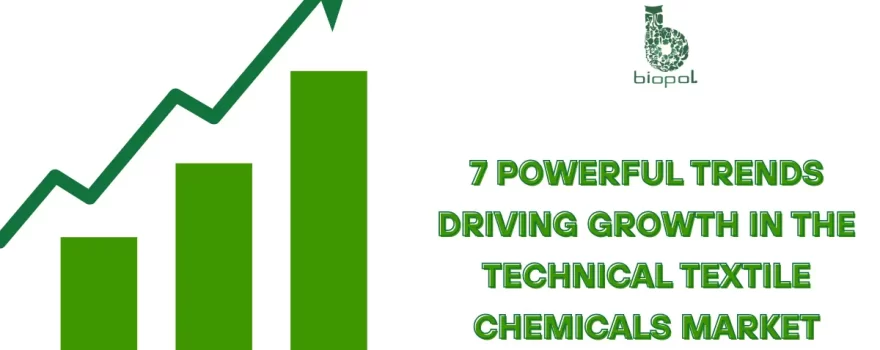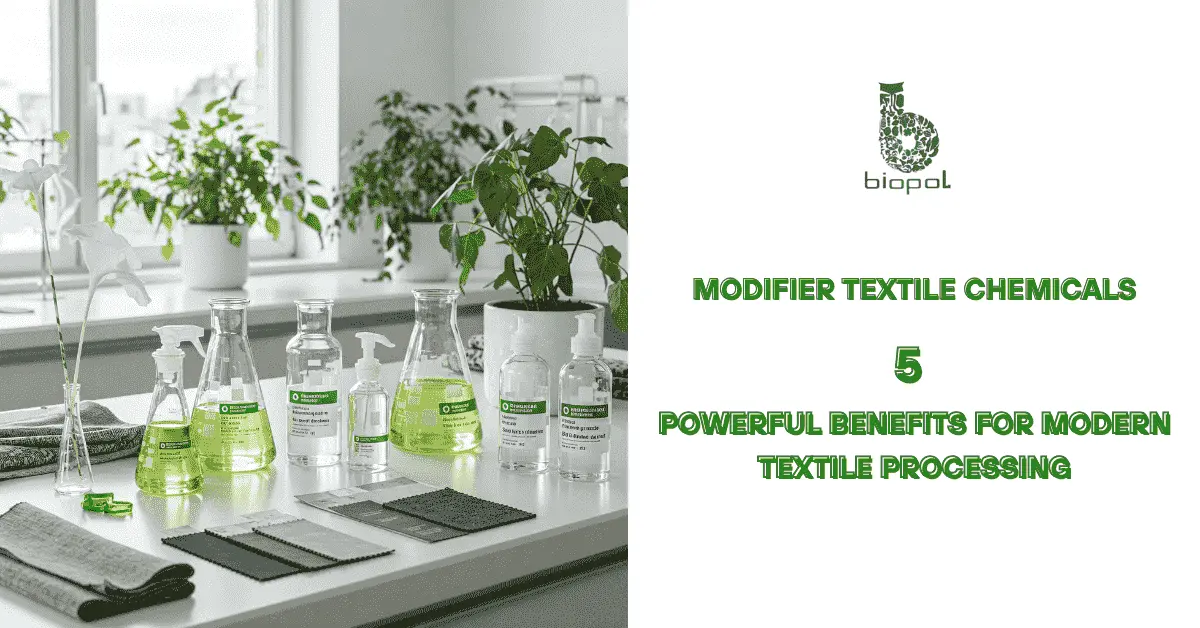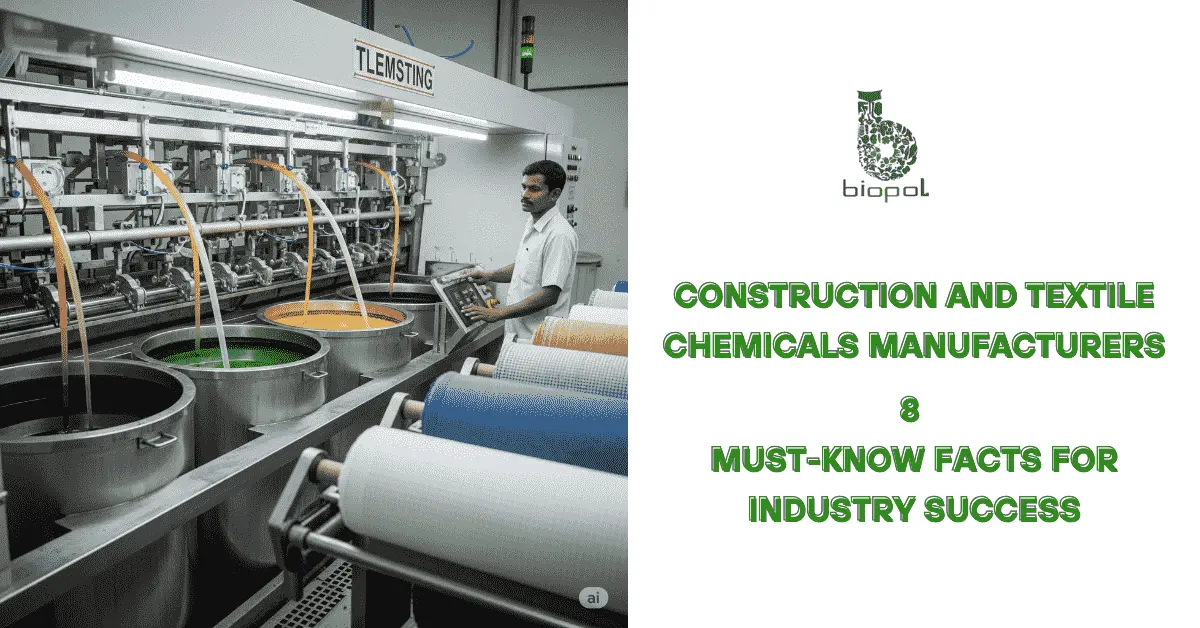
The technical textile chemicals market is seeing considerable growth, a trend propelled by the growing need for high-performance textiles in numerous industries.These chemicals are essential for improving the performance, longevity, and functionality of textiles, serving sectors like automotive, healthcare, and agriculture. As technological advancements and sustainable practices gain traction, the market is set for ongoing expansion, presenting fresh opportunities for both established and new entrants.
Table of Contents

Technical Textile Chemicals Market
Technical textile chemicals are everywhere—seatbelts, surgical gowns, HVAC filters—all powered by advanced chemical modifications. This market isn’t just about coatings; it’s about transforming textiles at their core. Think self-healing fabrics or temperature-sensitive color shifts—this is today’s reality.
Demand is surging as industries seek high-performance materials. The automotive sector needs lighter, stronger components, while healthcare demands antimicrobial and biocompatible textiles. Innovation is driving growth, with the global technical textile market projected to exceed $220 billion by 2028, with chemicals playing a crucial role. This isn’t just market expansion—it’s a revolution in material science.
Understanding Technical Textiles and Their Role in Modern Industries
Technical textiles? Consider them as the overlooked champions of contemporary manufacturing. They’re not your everyday fabrics. They’re engineered for performance, not just aesthetics. What do I mean? These textiles are built for specific applications. They solve problems. They enhance products.
Take the automotive industry. Seatbelts? Airbags? Those are technical textiles. They save lives. In construction, geotextiles stabilize soil and reinforce roads. Medical textiles? They range from surgical sutures to artificial ligaments. The military? Bulletproof vests and specialized uniforms. This is about materials that perform under stress, resist harsh conditions, and provide essential functions.
Why do they matter? Because modern industries demand more. It is essential for them to acquire materials that possess strength, durability, and reliability. They need solutions that push boundaries. Technical textiles deliver that. They enable innovation. They drive progress. In essence, they’re the backbone of many critical sectors. They’re not just fabrics; they’re essential components. They are the future of material science, right now.

Key Types of Chemicals Used in Technical Textiles
We’re not talking about your basic dyes and softeners. This is advanced chemistry. Think of these chemicals as the building blocks of high-performance fabrics. So, what are the key players?
- Flame Retardants: These are vital. They inhibit or reduce the rate at which fire spreads. In industries like aerospace and construction, they’re non-negotiable.
Examples include:
Phosphorus-based flame retardants: (e.g., organophosphates) used in furniture and building materials.
Brominated flame retardants: Decabromodiphenyl ethane, a type of brominated flame retardant, is frequently used in the manufacturing of electronics and upholstery.
- Water Repellents: Imagine a fabric that shrugs off water. That’s the power of these chemicals. They’re used in outdoor gear, medical textiles, and even industrial filters.
Examples include:
Antimicrobial Agents: In healthcare, these are crucial. They serve to obstruct the development of bacteria and fungi, particularly in the context of surgical gowns and wound dressings.
Fluorocarbons: (e.g., perfluorooctanoic acid (PFOA) alternatives) used in rainwear and outdoor textiles.
- Silicones: used in tents and industrial fabrics.
Examples include:
Silver ions: used in medical textiles and sportswear.
Quaternary ammonium compounds: used in disinfectant wipes and medical fabrics.
- UV Stabilizers: Sunlight can degrade fabrics. These chemicals protect against that. They extend the lifespan of textiles used outdoors.
Examples include:
Benzotriazoles: used in outdoor fabrics and automotive textiles.
Hindered amine light stabilizers (HALS): used in agricultural textiles and outdoor furniture.
- Reinforcing Agents: Strength matters. These chemicals boost the mechanical properties of textiles. They play a crucial role in both automotive and construction sectors.
Examples include:
Silanes: used to improve the bonding between fibers and resins in composites.
Epoxy resins: used to reinforce composite materials.
- Finishing Agents: These chemicals modify the surface properties of textiles. They can add softness, stiffness, or even conductivity.
Examples include:
Silicone softeners: used to improve the hand feel of fabrics.
Polyurethane coatings: used to add water resistance and durability.
- Binding agents: These are used to hold together non-woven fabrics and other textile structures, increasing durability.
Examples include:
Acrylic polymers: used in non-woven fabrics for filtration and hygiene products.
Latex: Used in carpet backing.
Each of these chemical groups plays a vital role. They enable textiles to perform specific functions. They solve problems. They drive innovation. Without them, technical textiles wouldn’t exist. They are the chemical backbone of the industry.
Market Dynamics: Growth Drivers and Challenges
What’s pushing the Technical Textile Chemicals Market forward? And what’s holding it back? Let’s break it down.
Growth Drivers
Increasing Demand for High-Performance Materials: Industries want fabrics that do more. They need materials that can withstand extreme conditions. This drives demand for specialized chemicals.
Stringent Regulations: Safety and environmental standards are getting stricter. This pushes manufacturers to use advanced chemicals that meet these requirements.
Technological Advancements: Innovation is key. New chemical formulations and application techniques are constantly emerging. This expands the possibilities for technical textiles.
Growing Applications: New uses for technical textiles are popping up all the time. From smart textiles to sustainable materials, the market is expanding.
Increased Infrastructure Spending: As governments invest in infrastructure projects, the demand for geotextiles and other technical fabrics rises.
Challenges
Environmental Concerns: Some chemicals used in technical textiles can be harmful. The industry faces pressure to develop more sustainable alternatives.
Raw Material Price Fluctuations: The cost of raw materials can be volatile. This impacts production costs and market prices.
Complex Supply Chains: Sourcing specialized chemicals can be tricky. This can lead to delays and disruptions.
Regulatory Hurdles: Navigating complex regulations can be a challenge. Companies need to stay up-to-date with changing standards.
Competition: The market is competitive. Companies need to innovate and differentiate themselves to stay ahead.
It’s a mix of opportunities and obstacles. The market is dynamic, and players must adapt to stay competitive. It’s a balancing act.
Emerging Trends Shaping the Industry Landscape
The Technical Textile Chemicals Market isn’t static. It’s evolving. What’s on the horizon?
| Trends | Details |
| Sustainability | Green chemistry is gaining traction, with companies developing bio-based chemicals and eco-friendly processes to reduce environmental impact. |
| Smart Textiles | Advanced materials like conductive polymers are enabling fabrics that can monitor health, change color, and adapt to external conditions. |
| Nanotechnology | Nano-scale chemicals are enhancing textile properties, making materials stronger, lighter, and more durable. |
| Digitalization | Advanced manufacturing technologies and data analytics are optimizing production, improving efficiency, and reducing costs. |
| Recycling & Circular Economy | Companies are focusing on recycling technical textiles and reducing waste, creating a more sustainable industry. |
| Personalized Textiles | Custom-made technical textiles are on the rise, designed for specific applications and individual needs. |
| High Performance & Durability | The demand for long-lasting, robust textiles is driving chemical innovation across various industries. |
These trends are not just buzzwords. They’re shaping the industry. They’re driving innovation. They’re creating new opportunities. What does that mean for you? It means a market that’s dynamic, exciting, and full of potential.
Application Sectors: How Different Industries Utilize Technical Textile Chemicals
The reach of technical textile chemicals market is vast. It spans numerous industries. Each sector has its own specific needs and applications.
Automotive:
Think seatbelts, airbags, and interior linings.
Flame retardants and reinforcing agents are crucial.
Chemicals enhance safety and durability.
Healthcare:
Surgical gowns, wound dressings, and implants.
Antimicrobial agents and biocompatible chemicals are essential.
Textiles protect against infection and promote healing.
Construction:
Geotextiles for soil stabilization and road reinforcement.
Water repellents and reinforcing agents are vital.
Chemicals improve infrastructure durability.
Aerospace:
Aircraft interiors, insulation, and structural components.
Flame retardants and high-strength chemicals are indispensable.
Materials withstand extreme conditions.
Sports and Leisure:
Outdoor gear, athletic apparel, and protective equipment.
Water repellents, UV stabilizers, and antimicrobial agents are common.
Chemicals enhance performance and comfort.
Agriculture:
Crop protection, and shade cloths.
UV stabilizers, and antimicrobial agents are used.
Chemicals help extend the life of agricultural textiles.
Environmental Protection:
Filtration systems, and waste management.
Specialized binding agents, and filtration chemicals are used.
Chemicals assist in cleaning and filtering.
Each industry relies on specific chemical properties. The chemicals enable textiles to perform critical functions. They solve industry-specific challenges. That’s how these chemicals touch so many facets of our lives.
Regional Analysis: Market Insights Across Key Geographies
The Technical Textile Chemicals Market isn’t uniform. It varies by region. Each area has its own drivers, challenges, and growth patterns.
| Region | Key Market Trends |
| North America | Innovation-driven with strong demand from automotive and aerospace sectors. Strict environmental regulations push sustainable solutions. A mature, steady-growth market. |
| Europe | Sustainability-focused with a robust textile industry and strong R&D. High environmental standards drive innovation and quality. |
| Asia Pacific | Fast-growing market fueled by industrialization and a strong textile manufacturing base. Government investments in infrastructure and healthcare boost demand. |
| Latin America | Expanding industrial sector with rising demand for technical textiles. Infrastructure growth and environmental awareness create new opportunities. |
| Middle East & Africa | Increasing demand from construction and oil & gas industries. Infrastructure investments and growing awareness drive market expansion. |
Each region presents unique opportunities and challenges. Understanding these regional dynamics is crucial for market players. It’s about recognizing local needs and adapting strategies accordingly.
Regulatory Framework and Environmental Impact Considerations
The Technical Textile Chemicals Market operates within a complex web of regulations. And, of course, environmental impact is a major concern.
Regulatory Framework:
Governments worldwide are tightening regulations on chemical use.
REACH (Registration, Evaluation, Authorisation and Restriction of Chemicals) in Europe is a prime example.
EPA (Environmental Protection Agency) in the U.S. sets strict standards.
These regulations aim to protect human health and the environment.
Companies must comply with these rules to operate legally.
Regulations cover everything from chemical composition to waste disposal.
It is seen that many countries are setting their own regulatory bodies to manage these concerns.
Environmental Impact Considerations:
Some chemicals used in technical textiles can be harmful.
Concerns include water pollution, air pollution, and soil contamination.
The industry is under pressure to adopt sustainable practices.
Developing bio-based chemicals is a key focus.
Reducing waste and promoting recycling are also priorities.
Life cycle assessments are becoming increasingly important.
Companies are investing in cleaner production technologies.
The use of PFC’s is being heavily regulated and reduced.
Compliance is non-negotiable. Sustainability is essential. Companies that ignore these factors do so at their peril. It’s about balancing performance with responsibility.
Future Outlook
Where is the Technical Textile Chemicals Market headed? What exciting developments can we expect?
Advanced Materials:
Expect to see more smart textiles with integrated sensors and electronics.
Self-healing fabrics and responsive materials will become more common.
Nanotechnology will drive the development of ultra-high-performance textiles.
Sustainability:
Bio-based chemicals and eco-friendly production processes will dominate.
The circular economy will gain traction, with increased recycling and reuse of textiles.
Companies will focus on reducing their carbon footprint and minimizing waste.
Digitalization:
AI and machine learning will optimize production processes and improve efficiency.
Digital supply chains will enhance transparency and traceability.
E-commerce and online platforms will facilitate market access.
Personalization:
Customized technical textiles will cater to specific needs and applications.
3D printing and additive manufacturing will enable on-demand production.
Individualized solutions for healthcare, sports, and other sectors will emerge.
Increased Functionality:
Textiles with enhanced antimicrobial, antiviral, and protective properties will be in high demand.
Conductive textiles for wearable electronics and energy harvesting will expand.
Textiles designed for extreme environments and harsh conditions will find new applications.
Increased regulation and transparency:
Regulations regarding chemical use will become more strict and globally aligned.
Consumers will demand more transparency regarding the chemical makeup of their textiles.
The future is bright. Innovation is the driving force. Companies that embrace these trends will thrive. It’s a market ripe with opportunity.
Conclusion
The Technical Textile Chemicals Market is a dynamic space. It’s driven by innovation and demand for high-performance materials. Here’s what you need to remember:
Essential Role: These chemicals are critical for enabling the functionality of technical textiles across diverse industries. They’re not just additives; they’re integral components.
Market Drivers: Growth is fueled by increasing demand for advanced materials, stringent regulations, and technological advancements.
Key Trends: Sustainability, smart textiles, and nanotechnology are shaping the future of the industry. These trends are not fads; they’re the future.
Regional Variations: Market dynamics differ across geographies. Understanding these regional nuances is crucial for success.
Competitive Landscape: The market is competitive, with leading players focusing on innovation, partnerships, and customer focus.
Regulatory Compliance: Adhering to regulations and addressing environmental concerns is non-negotiable. It’s about responsible growth.
Future Opportunities: The industry offers significant opportunities for those who embrace innovation and sustainability. The future is bright for those who adapt.
In essence, the Technical Textile Chemicals Market is a vital part of modern manufacturing. It’s a space where science meets industry. And it’s a market that’s poised for continued growth and innovation.
Also Read: Textile Chemicals: The Secret Sauce Behind Your Clothes

